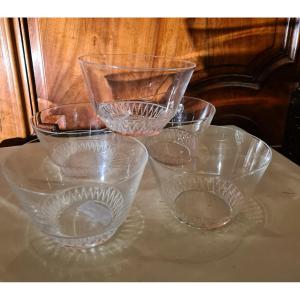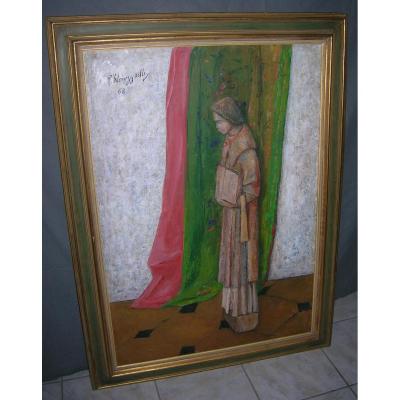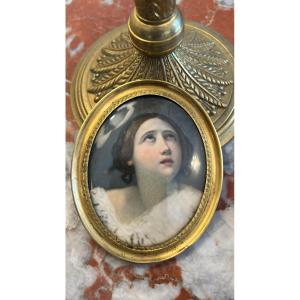Cork wedges and metal reinforcements have been added to prevent vibrations and to preserve the unrestored porcelain plate. The frame is in gold leaf (restoration of some minor retouching to the leaf).
La Répudiation D 'agar, Porcelain Plate. XIXth Century. "Abraham is represented as a bearded old man wearing a blue and red tunic. He chases Agar to the door of his home. Behind him, dressed in dark clothes, stands an old woman, Sarah. At her feet, her son Isaac holding out a tunic. Hagar represented from behind, whose youth and beauty is underlined by the bareness of the shoulders, pulls her son Ishmael. He turns around and meets Isaac's gaze, his half-brother. Hagar slung a jug and bread that Abraham gave them to cross the desert. In the dark and misty background, a landscape appears punctuated by ancient monuments. This scene is inspired by a biblical scene (Genesis XXI). Long sterile, Sarah, wife of Abraham encouraged the union of Abraham and an Egyptian servant Hagar. From this union is born Ishmael. Divine intervention will allow Sarah to give birth to a son thus resulting in the banishment of Hagar and her son so that Isaac never has to share the inheritance with his brother. This plaque is inspired by a painting by Adrian Van der Werff (1659-1722) Dutch painter, sculptor and architect. This multi-talented artist was best known as a painter of history and religious history and worked for the elector palatine Johann Wilhelm von der Pfalz, who appointed him court painter.


















































 Le Magazine de PROANTIC
Le Magazine de PROANTIC TRÉSORS Magazine
TRÉSORS Magazine Rivista Artiquariato
Rivista Artiquariato